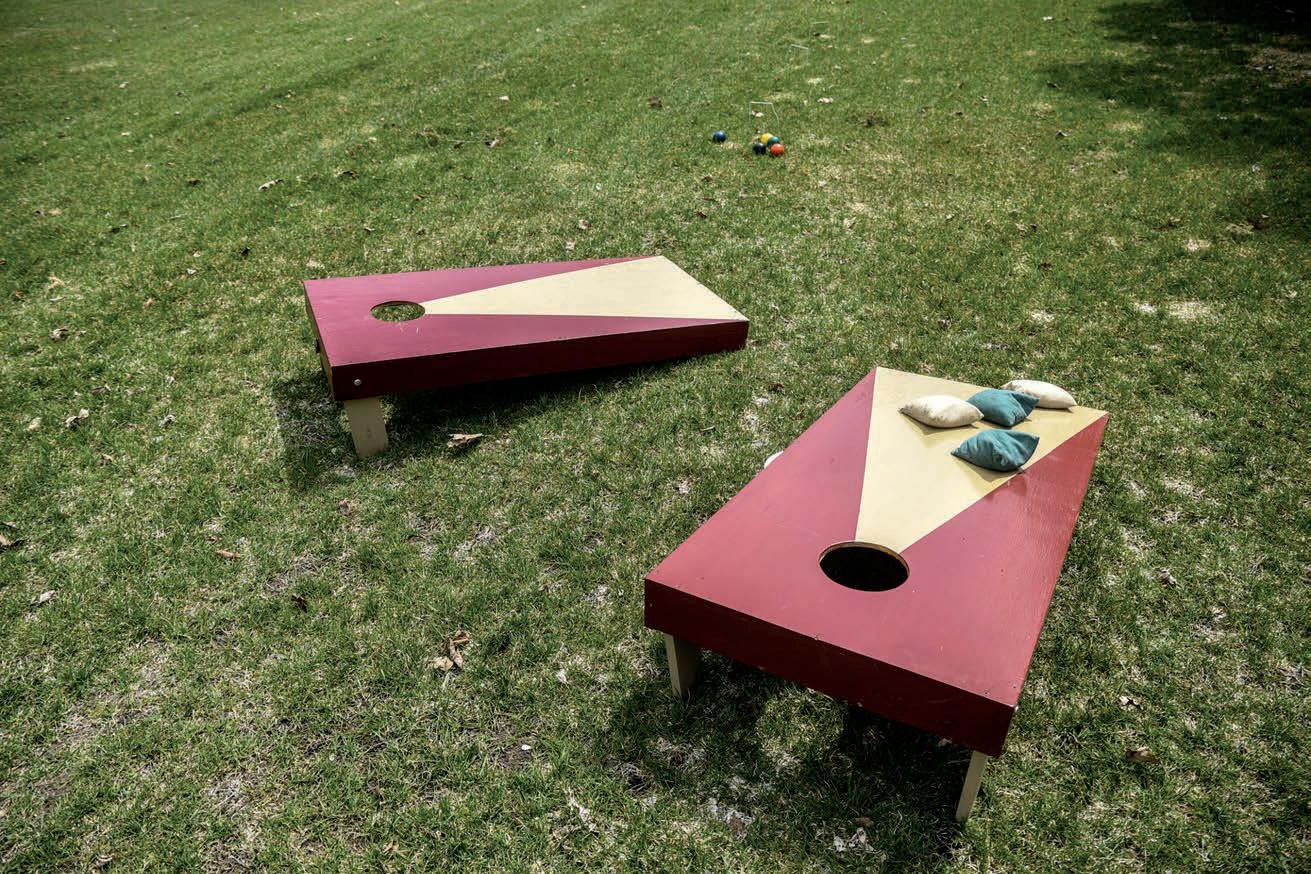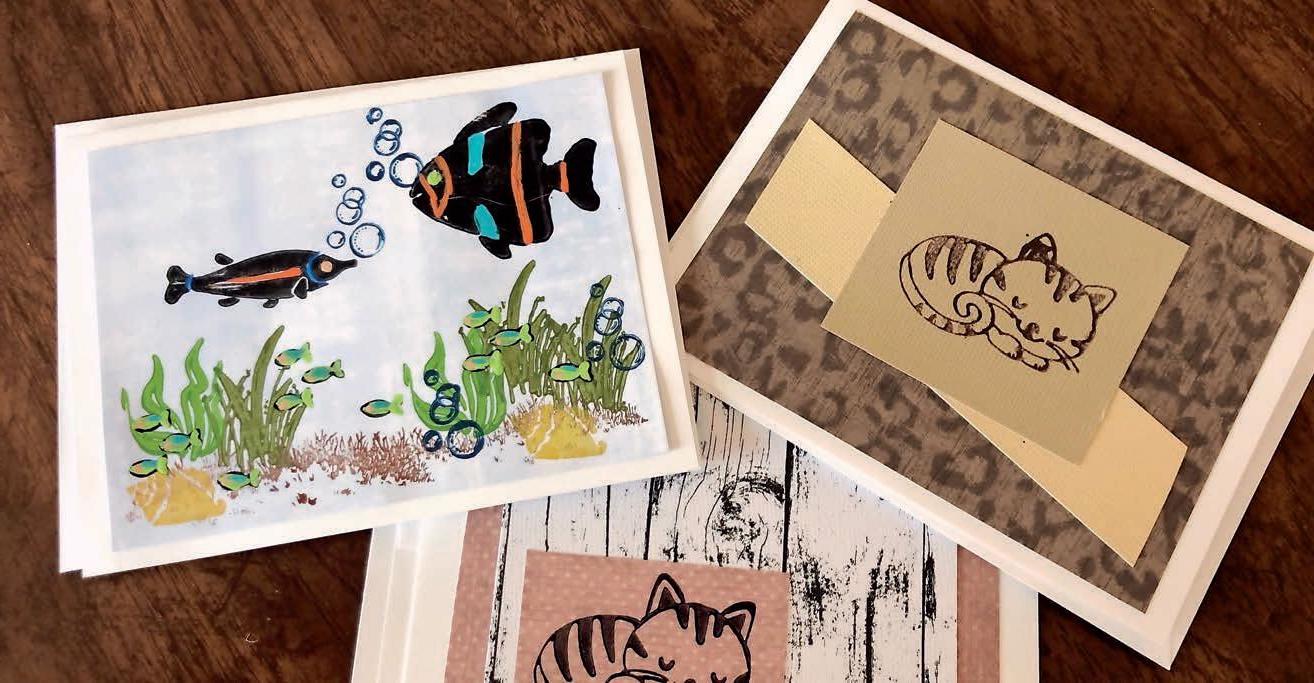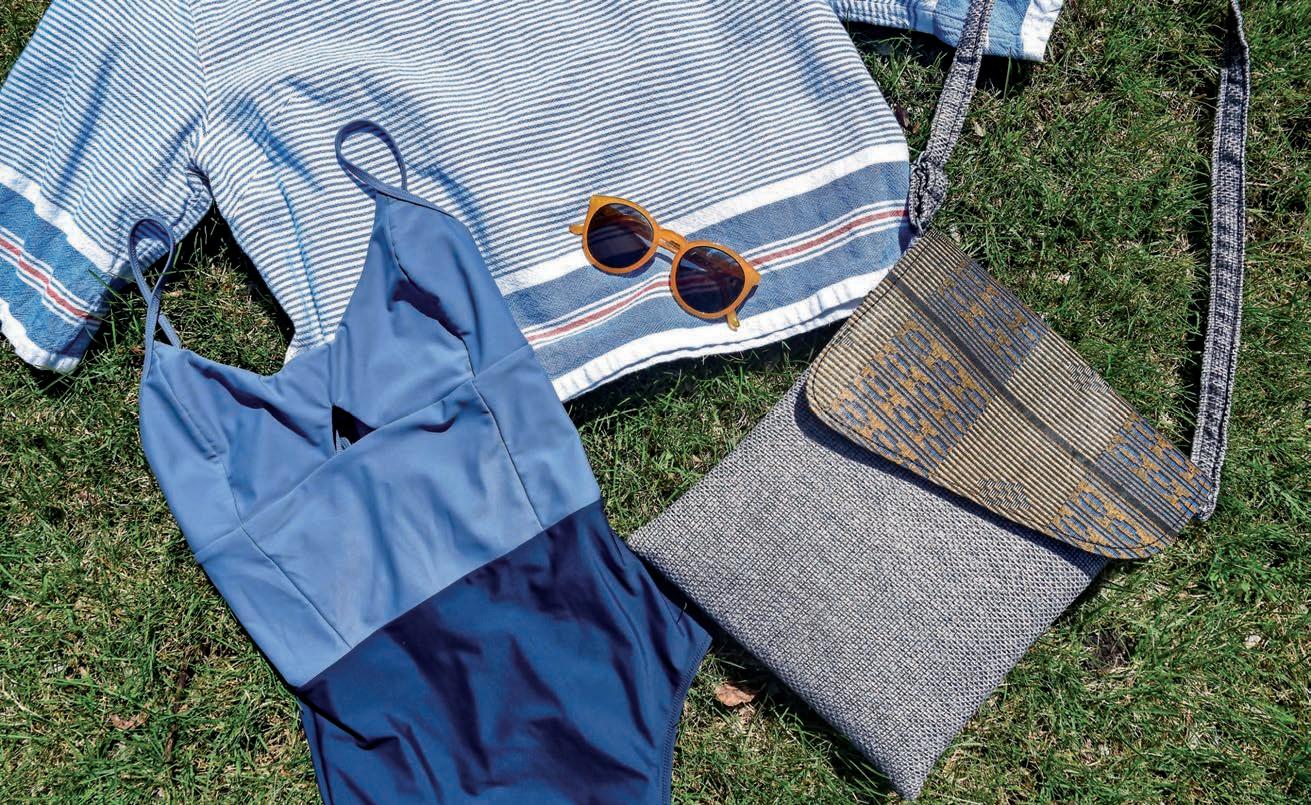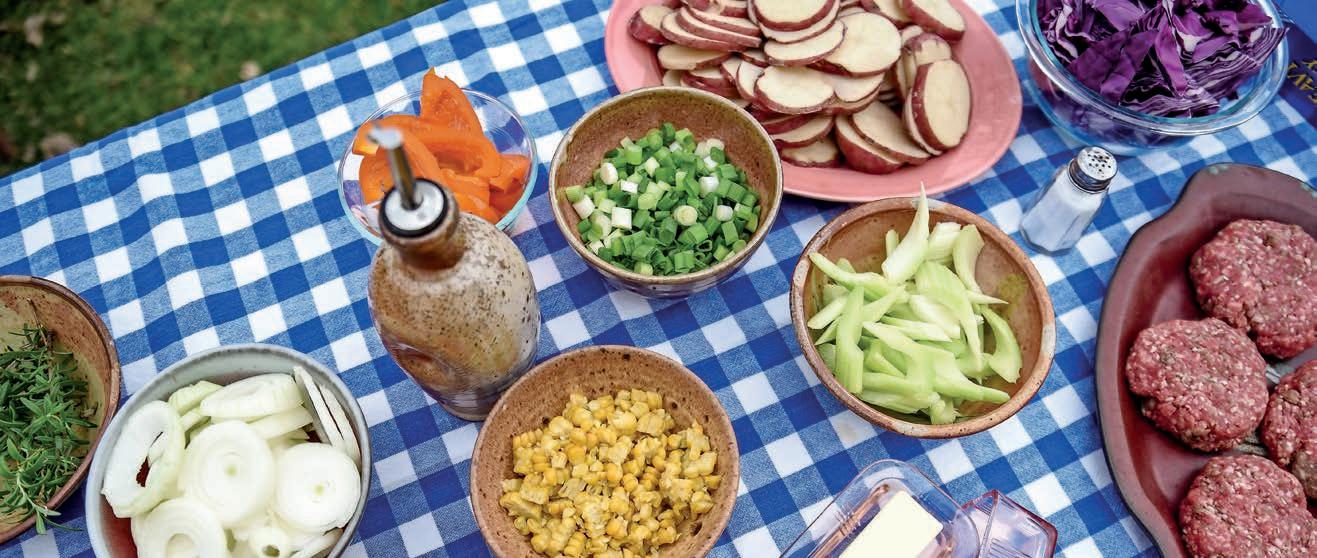
9 minute read
YOUR BACKYARD INTO AN OASIS
Backyard Your Own Photography by ERICA DISCHINO edischino@wctrib.com & SHARON BOMSTAD sbomstad@wctrib.com & Courtesy photos
A vacation spot and so much more
By Carolyn Lange clange@wctrib.com S ometimes it doesn’t take much to have fun, even in your own backyard.
A couple of battle-ready squirt guns, a bottle of bubbles and a wand, a picnic table with a big watermelon sliced up, a hammock and a book, or bean bags ready to be tossed on the board can be the perfect combination for the lazy, hazy, crazy days of summer.
That’s especially true when going to the backyard may be the vacation destination for many families this year.
And it doesn’t matter if you have a spacious farm yard with room enough for a baseball game or a postage stamp-sized yard with room for a couple of cartwheels – a backyard can be a place for families to play, eat, laugh and relax together.
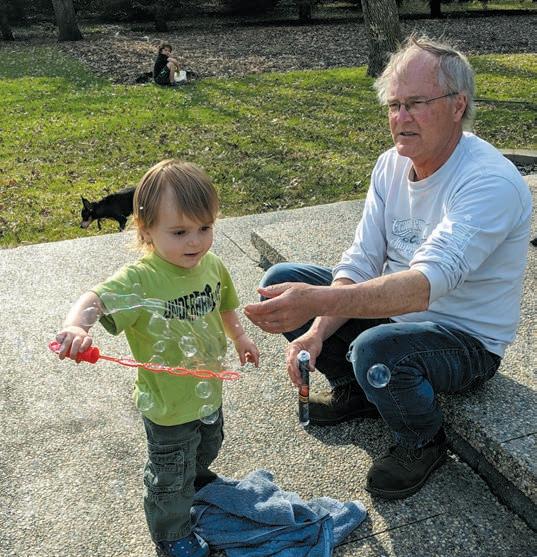
“By going outdoors, it can help get your mind off things that are happening. An enjoyable backyard becomes another room of your house.” – Christa Larkin
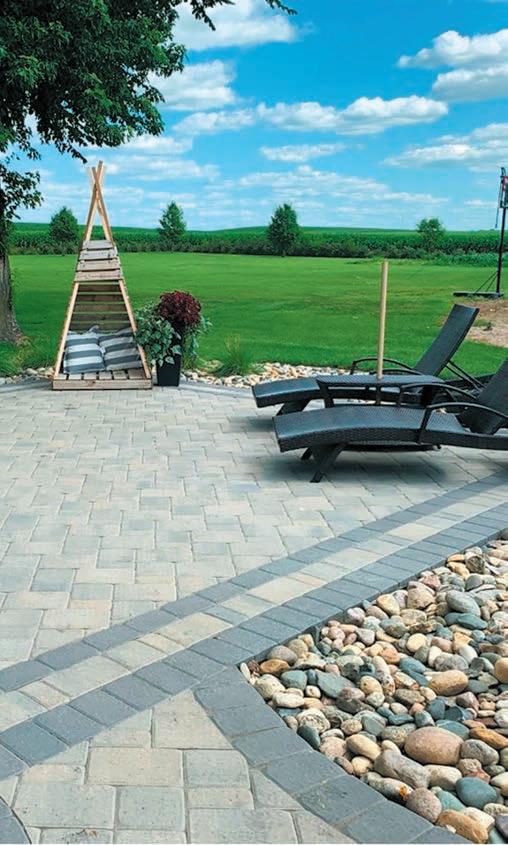
Consider your backyard a place where nature begins, said Kris Kiser, president of the TurfMutt Foundation, an organization that encourages outdoor learning experiences, stewardship of green spaces and care for living landscapes.
“Get outside, mow your lawn, trim bushes, plant a butterfly bush. By becoming a steward of your yard, you are helping the planet,” Kris said in a statement this spring, prior to the 50th celebration of Earth Day. “At the same time, you’re supporting your health and well-being, which is increasingly important as families spend more time at home.” Landscape improvements
It’s usually never hard to find backyard DIY projects.
If you’re looking for ways to improve the atmosphere, Christa Larkin from Larkin Tree Care & Landscaping of Renville, said some basic design elements to turn an ordinary backyard into an oasis includes water features, fire pits, lighting, outdoor furniture, plantings, privacy and outdoor music.
None of these elements has to be expensive, she said.
“Create a place where a family can gather in privacy by using plants,” she said. Small fountains with the sound of moving water and a fire pit rimmed with mulch, rock, grass or pavers can be an inexpensive way to create a place to relax.
When selecting plants for yards, Christa reminds people to check the climate zone. West central Minnesota is in Zone 4, she said. It’s also beneficial to check the mature size of the plant, light requirements, bloom time and soil requirements.
“It is very helpful to have a design of the plants you will use, so you don’t end up buying too many, not enough, or simply not the right plant for the spot,” said Christa.
A backyard is more than an empty space, she said.
“By going outdoors, it can help get your mind off things that are happening,” she said. “An enjoyable backyard becomes another room of your house.” Furnishing an outdoor room
Lawn chairs aren’t what they used to be.
Who remembers the vintage wood and canvas chairs that looked like an X? No arms, no back, just a little seat to perch on.

wFOR Sew Safety
Every student matters, every moment counts
Willmar Community Education
1234 Kandiyohi Avenue SW | Willmar, MN 56201 320-231-8490 www.cewillmarmn.com

If you are a Kandiyohi County institution in need of masks, we are here to help. Please contact us to request homemade masks sewn by our community members. 320-235-1050

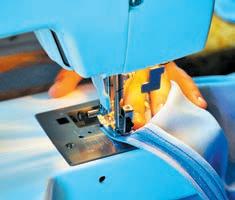
The CDC recommends masks be worn. Our local institutions are in need of homemade masks. If you're able to sew, please sign up to indicate how many you can contribute.
“A water feature can be a focal point that creates a calming, tranquil feeling in your backyard. There is nothing like the sound of moving water to evoke a sense of comfort and relaxation.” – Katie Morgan
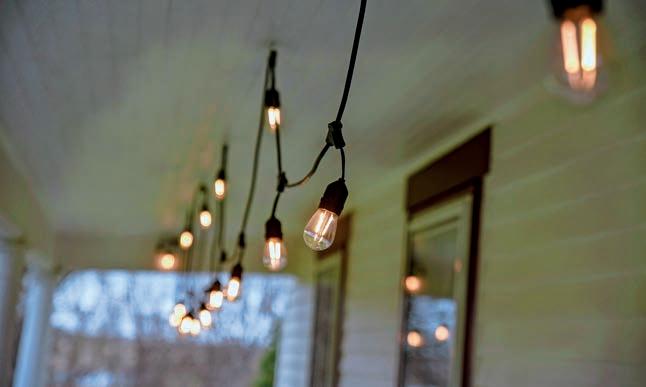
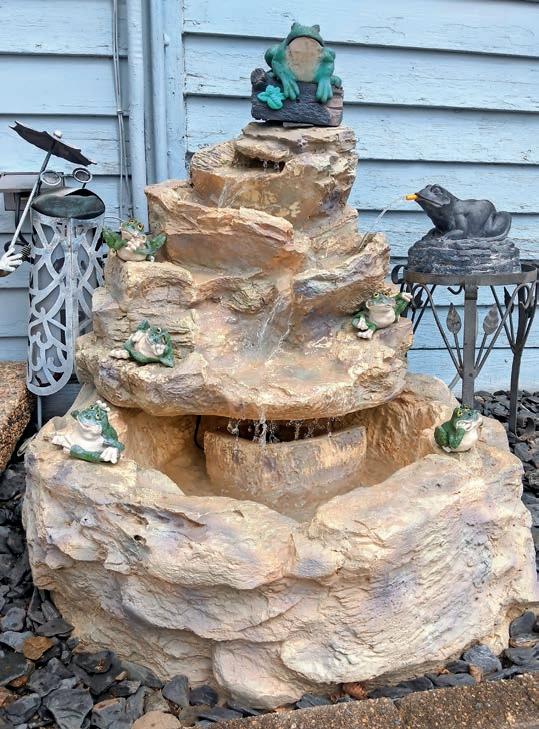

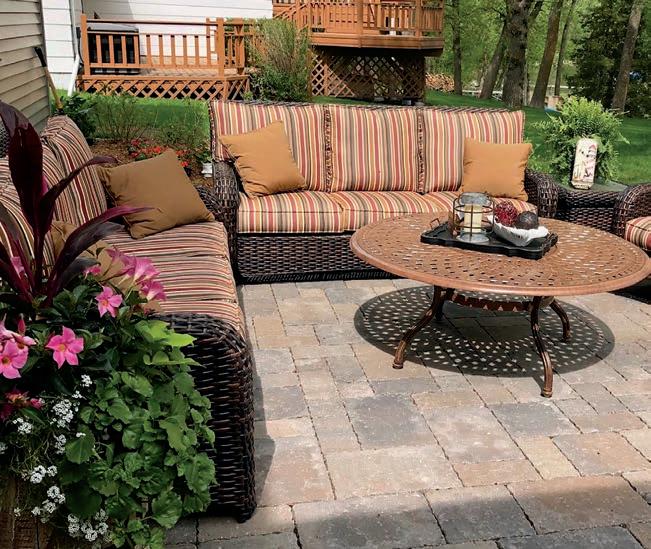

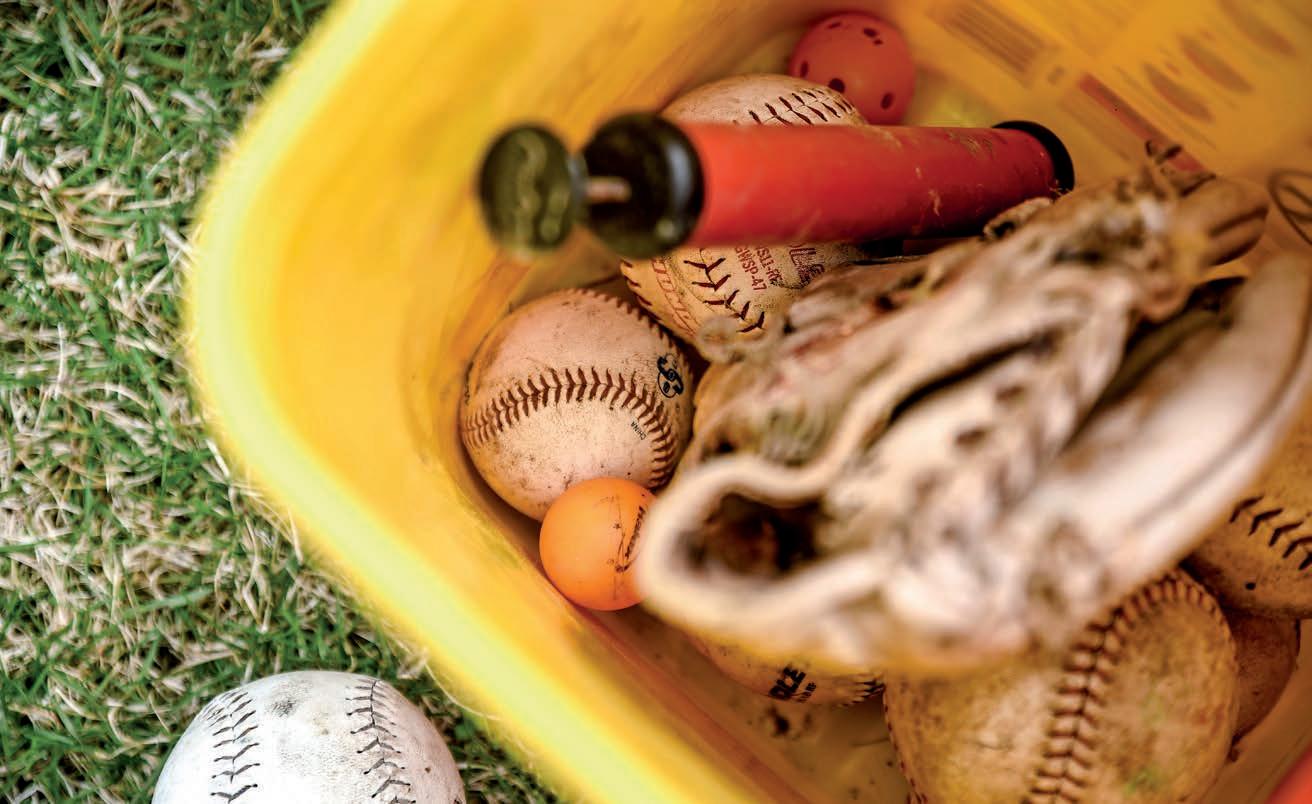
Who remembers falling off those little chairs?
Fortunately, there are now a variety of comfortable and functional seating arrangements that can help create a relaxing backyard atmosphere, said Katie Morgan, owner of Interior Design Studio & Gallery in Willmar.
Katie recommends furniture made of cast aluminum, recycled poly or synthetic wicker, which can stand up to Minnesota’s elements.
She suggests pairing a seating arrangement with landscaping, outdoor rugs made from synthetic fibers such as polypropylene Sunbrella outdoor fabrics and adding a focal point – like a real-wood fire pit, gas fire table or a water feature.
Adding “layers of lighting” can also enhance an outdoor space.
“Different types of lighting can be used to identify key areas or features, as well as be functional, such as pathway lights,” said Katie.
“Subtle accents such as lanterns and string lights can make your space feel more inviting and welcoming,” and are a “great way to extend and expand your existing living space,” she said.
Overhead porch fans are also a “nice addition to provide relief from heat and bugs,” said Katie. Game time
Playing catch was what many “boomers” grew up doing when they were kids.
It’s still a good gig.
Whether it’s playing hoops, kicking a soccer ball or being creative with sidewalk chalk, taking time to be active outside is a great way for families to stay fit and stay connected.
An outdoor swimming pool, whether it’s a fancy in-ground model or a blow-up kiddie pool, can be a great distraction during hot summer days when beaches may not be in the cards.
Outdoor games like bocce ball, croquet and badminton are popular options for teams of two or more.
One Willmar family likes to make their own games for neighborhood get-togethers. Nate Schueler used a regular step ladder and taped signs with numbers (in increments of 10) on the rungs. Bean bags are tossed and the according points are garnered for each bag that lands on a rung.
Nate has also spray-painted a Twister board on the grass to replace the slippery vinyl mat that comes with the purchased game. He uses the spinner from the boxed game to call out the directions that tie participants up in knots.
Wait until the dew is off the grass before applying the paint and allow a couple hours for the paint to dry before playing, said Nate. The design will gradually disappear each time you mow the lawn.
The family takes advantage of their above-ground pool for water volleyball and they use an inflatable bull to create a rodeo where a “rider” attempts to stay on while others in the pool create a bucking bronco.
Being creative and putting a new twist on outdoor games “allows you to have a good time instead of feeling like you have nothing to do,” said Nate. It’s in the bag
Bean bag boards, called “cornhole” boards in some states – probably the same ones that call pop “soda” – are wildly popular in this neck of the woods, with communities and churches holding summer leagues and tournaments.


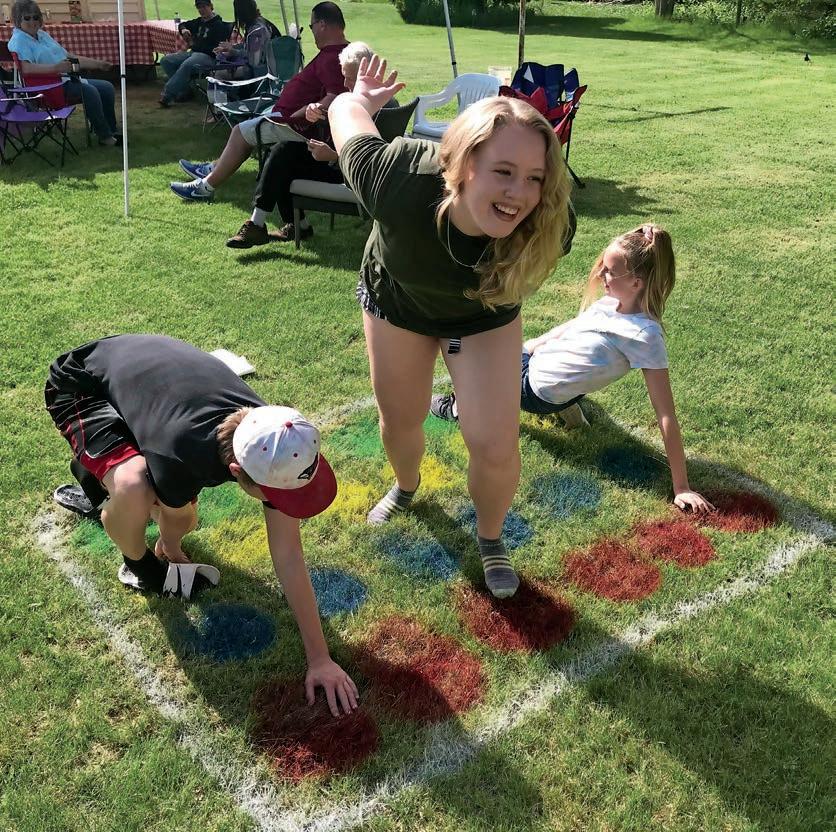
Since 1991, Heartland Orthopedic Specialists has supported and cared for more colleges, high schools, coaches, and athletes than any other practice in the region. Our team approach, advanced techniques, and positive outcomes are just some of the reasons we’ve been recognized nationally and remain the region’s most preferred orthopedic providers.

320.214.7355 HeartlandOrthopedics.com

For the past two decades Mike Miller has organized a bean bag tournament for family and friends that’s held every Labor Day weekend at Sibley State Park near New London. They even have a traveling trophy for the two annual winners who emerge from a field of about 50 competitors.
Mike provided Live It! with the details on how to keep a bean bag tournament legal and fun.
Equipment: A regulation-sized board is 2 feet wide and 4 feet long with a round, 10-inch diameter hole cut near the top. There are eight bags in a set – four for each side, made from different colored fabric. Each bag is a 6-inch square and weighs 16 ounces. Mike advises against filling bags with corn or soybeans, which can sprout or get moldy if they get wet, and can attract rodents. He purchases bags filled with synthetic beads.
How to: The boards are placed 30 feet apart – measured “from hole to hole,” said Mike. In this tournament, one player throws all four of their bags and then the other player throws theirs onto the same board. (More commonly, players alternate throwing.)
Players cannot step in front of the board while throwing. He recommends throwing underhanded to give the bags a nice “loft.”
Scoring: Three points are given for getting a bag in the hole and there’s one point for getting a bag on the board. No point is given if the bag touches the ground before bouncing onto the board or if it falls off the board. Scoring can include bags “canceling” points, said Mike. For example, if player A gets a bag in a hole (3 points) and player B gets two bags on the board (2 points), player A gets one point. The first to 21 wins.
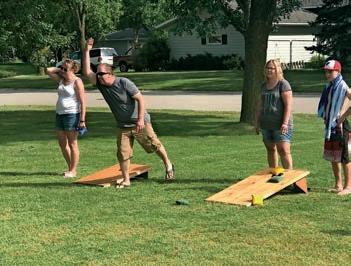
To play in the tournament names are put in a hat (there are separate buckets for names of men and women) and pulled out randomly to form teams that can range in age from 10 to 80. Each team is co-ed. They typically have 20 to 25 teams for the double-elimination tournament, which can take four to five hours. Yes, there is a potluck involved.
The results are tracked on brackets in a picnic shelter and each member of the winning team gets the honor of hanging onto the traveling trophy for a year. The names of the winners are engraved on the trophies to document the history of the event, said Mike.
“We know who’s won every year for the last 20 years,” he said. “They get to come back the next year to defend their title.”
Carolyn Lange is a features writer for Live it! Magazine, and a reporter with the West Central Tribune in Willmar.
